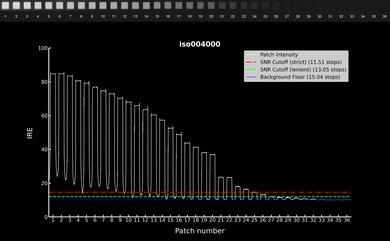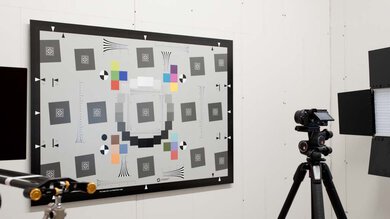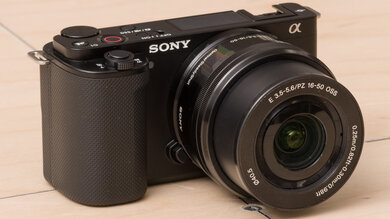
There's no denying that photography can be an expensive hobby. But thankfully, you can find plenty of great entry-level cameras for under $1,000. These include interchangeable-lens DSLRs and mirrorless models, as well as point-and-shoots with fixed lenses and dedicated vlogging cameras. Given the wide variety of options and how far camera tech has come, it's hard to go wrong with any modern-day camera, even at this budget. That said, if you want to open up even more options in the under $1,000 range, you can also shop around for used models on eBay or at retailers like Adorama, B&H Photo Video, KEH Camera, and MPB.
We've bought and tested over 110 cameras in our lab, and below, you'll find our recommendations for the best cameras under $1,000. If you're on an even tighter budget, you should see the best cameras under $500 instead. If you're specifically looking for a mirrorless model, check out the best mirrorless cameras under $1,000, and if you're looking for beginner-friendly options, you can also see our picks for the best cameras for beginners.
-
Best Camera Under $1,000
Travel Photography7.9Landscape Photography7.8Sport & Wildlife Photography8.4Vlogging7.5Studio Video7.8Action Video4.9Performance Usages: Raw Photo7.5The Canon EOS R10 is the best camera we've tested that you can buy new for under $1,000. Though the body alone typically goes for $1,000, you can often find it on sale or find used models for less. At this price point, it's one of the best-value APS-C cameras on the market. With 4k recording at up to 60 fps (albeit with a crop), along with a very reliable autofocus (AF) system, this is an excellent entry-level hybrid camera. It also delivers great image quality and has a very quick 15 fps burst rate to capture moments of fast action. If that wasn't enough, it also features an easy-to-use interface, comfortable ergonomics, and a solid battery life.
The Fujifilm X-S10 is another excellent choice that falls around the same price. It's one of the few cameras under $1,000 to feature in-body image stabilization (IBIS), which can help you get clear handheld shots at slower shutter speeds and reduce camera shake in videos. It also has a more established lens ecosystem than the Canon, which is still a bit limited in terms of lens selection. That said, the X-S10's autofocus system isn't nearly as reliable as the AF on the R10, and the camera's internal video features are a bit more limited.
-
Best Beginner Camera Under $1,000
Travel Photography7.9Landscape Photography7.5Sport & Wildlife Photography8.0Vlogging7.9Studio Video7.7Action Video4.9Performance Usages: Raw Photo7.4For those just getting started in photography, the Canon EOS R50 is one of the best-value options for beginners. Like the Canon EOS R10 above, it has simple controls and an intuitive menu system, making it very accessible for people jumping into their first dedicated camera. Image quality is great for its class, and its lightweight, portable design makes it easy to take on the go. Plus, its extensive auto and creative shooting modes let you try out different photography styles while learning the ropes.
If you want to save even more money, dipping into the used market and looking for older DSLRs like the Nikon D3500 can be a great way to save money. DSLRs also have more established lens lineups, giving you more options to choose from as your skills grow. The D3500 is still one of our favorite beginner cameras because of its built-in Guide Mode, which breaks down the fundamentals of photography for newbies. It's positively no-frills compared to the mirrorless R50, so you'll lose out on things like 4k video capability and an articulated screen, but it's a solid starting point for budding photographers.
-
Best Portable Camera Under $1,000
Travel Photography7.9Landscape Photography8.0Sport & Wildlife Photography7.4Vlogging8.6Studio Video8.7Action Video6.4Performance Usages: Raw Photo8.0The Fujifilm X-M5 isn't just the most compact interchangeable lens camera on this list, it's also a surprisingly powerful little camera. While it uses an older generation sensor, it features Fujifilm's latest processor and, with it, brings a highly effective autofocus tracking system and the latest video features. For the price, it's hard to beat all that it has to offer, from 4k 60 fps video recording in 10-bit to subject tracking and excellent image quality.
Of course, being as compact as it is, there are some major downsides here. Most notably, the camera lacks a viewfinder, which can be a dealbreaker for some photographers, especially if you're shooting outdoors in sunny conditions. Its ergonomics and battery life also leave a little to be desired, and there's no room for IBIS. Still, if you're looking for an ultra-portable mirrorless body, this is the way to go.
-
Best Camera Under $1,000 For Lens Selection
Travel Photography8.2Landscape Photography8.1Sport & Wildlife Photography7.5Vlogging7.4Studio Video7.5Action Video5.6Performance Usages: Raw Photo7.9If you want to invest in a well-established lens ecosystem, the best option under $1,000 is the Sony α6400. Since it's part of Sony's long-standing E lens mount ecosystem, you'll have a very wide range of native and third-party lens options to choose from. Despite the camera's age, it still has one of the best autofocus systems of its class, along with some decent video specs and a high-resolution sensor capable of capturing excellent images.
Though it's been surpassed by the more advanced Sony α6700, the α6400 still has a lot to offer at a significantly lower price point. That said, if ergonomics and ease of use are a priority, consider the Nikon Z 50 instead. The AF on the Z 50 isn't quite as snappy as Sony's, but it has excellent ergonomics and build quality, including some weather-sealing to keep out dust and moisture. While it uses a lower-resolution sensor than the Sony, it still captures great image quality and performs quite well in low light. The Z mount has some great lens options, but lens selection is notably more limited than Sony's E mount.
-
Best DSLR Camera Under $1,000
Travel Photography7.4Landscape Photography7.4Sport & Wildlife Photography6.9Raw Photo Performance7.3Vlogging7.0Studio Video6.9Action Video2.9Mirrorless options are great for hybrid or video shooters thanks to their quick autofocus systems, but you can't go wrong with a tried-and-true DSLR for photography. The best DSLR camera we've tested under $1,000 is the Canon EOS Rebel T8i/850D. It's Canon's most capable entry-level DSLR, providing all you need in a starter camera.
Though you can't see image adjustments in real-time through the viewfinder, as you would with a mirrorless model like the Canon EOS R50, the optical viewfinder gives you a direct, unfiltered view of your subjects. The roomy handgrip and well-spaced controls also make for a very comfortable shooting experience. All of that, plus a battery life that's hard to beat, a great autofocus system for its class, and a wide range of lenses to choose from, makes this one of the best DSLRs you can get for the price.
-
Best Vlogging Camera Under $1,000
Travel Photography8.2Landscape Photography8.1Sport & Wildlife Photography7.3Vlogging8.7Studio Video8.2Action Video4.8Performance Usages: Raw Photo8.0If you're looking for a vlogging camera that comes in under $1,000, the Sony ZV-E10 is the best option on the market. With no viewfinder, a fully articulated screen, and a built-in vlogging microphone, it's designed specifically for vlogging. On top of that, it's nice and portable, and its APS-C sensor captures high-quality photos and 4k video at up to 30 fps. It also comes with neat vlog-oriented features like a 'Product Showcase' mode that prioritizes the focus on objects held up in the frame. The newer Sony ZV-E10 II is a step up from the original if you need more advanced features like internal 10-bit capture, but the original ZV-E10 is cheaper and will suit most entry-level vloggers.
If you prefer the simplicity of a point-and-shoot camera, the Sony ZV-1 is the compact, fixed-lens cousin of the ZV-E10, sitting around the same price point. It uses a smaller sensor, so you won't get as much dynamic range out of it, and its fixed lens is a bit more limiting. Plus, battery life is naturally worse. However, it's a great alternative if you want an all-in-one camera. If you prefer a wider-angle view, the newer Sony ZV-1 II has an updated lens, but it'll cost you a bit more and lacks optical stabilization.
-
Best Full-Frame Camera Under $1,000
Travel Photography7.7Landscape Photography7.8Sport & Wildlife Photography6.7Raw Photo Performance7.6Vlogging7.9Studio Video7.5Action Video3.7While most cameras in this price range have smaller sensors, the Canon EOS RP proves it's possible to get full-frame image quality without breaking the bank. You'll have to pay over $1,000 to get a lens bundled with the camera, but it's still one of the most affordable full-frame cameras on the market unless you shop second-hand. It's also relatively small and lightweight, and the simple control layout and easy-to-use menu system make it fairly accessible to newer users.
Some trade-offs come with this attractive price tag. The camera's all-plastic construction feels cheaper than higher-end full-frame cameras aimed at enthusiasts and pros. It also has a disappointingly short battery life and a slow max burst rate. Still, you'll have a hard time finding full-frame image quality for less, so if these aren't dealbreakers, the RP is a great deal if you're serious about getting into photography and want to jump right into a full-frame model.
Notable Mentions
- Fujifilm X-T30 II:
The Fujifilm X-T30 II is a very portable APS-C camera that falls around the $1,000 mark. Unlike the Fujifilm X-M5, it has a viewfinder, but it has worse video features and isn't quite as portable.
See our review - Nikon Z fc: The Nikon Z fc is one of the more unique cameras you can buy for under $1,000 since it's designed to look like a vintage SLR. It's more stylish than the Sony α6400 and includes a versatile fully articulated screen, but it's less portable and doesn't have as wide a lens selection. See our review
- Olympus OM-D E-M10 Mark IV: The Olympus OM-D E-M10 Mark IV is another great beginner camera for those on a budget. It's more portable than the Canon EOS R50 and has more lens options, but it uses a smaller Micro Four Thirds sensor and has a less reliable autofocus system. See our review
Recent Updates
-
We added the Fujifilm X-M5 as the 'Best Portable Camera Under $1,000' because of its highly compact size and well-rounded feature set.
-
We added a comparison to the Sony ZV-E10 II to provide more market context for the Sony ZV-E10.
-
Aug 01, 2024 : We added the Nikon Z fc to the Notable Mentions since it occupies a unique position in the market thanks to its vintage-style design.
-
May 06, 2024 : We added links to various retailers that sell used cameras in the introduction of this article to give users a wider range of cameras to consider at this price point.
-
Mar 08, 2024 : We've reviewed the article to ensure the picks are still accurate.
All Reviews
Our recommendations above are what we think are currently the best cameras under $1,000 for most people to buy, according to their needs. We factor in the price, feedback from our visitors, and availability (no cameras that are difficult to find or almost out of stock in the U.S.).
If you would like to choose for yourself, here's the list of all our reviews for cameras under $1,000. Be careful not to get caught up in the details. There is no single perfect camera. Personal taste, preference, and shooting habits will matter more in your selection.
Comments
Best Cameras Under $1,000: Main Discussion
What do you think of our picks? Let us know below.
Looking for a personalized buying recommendation from the RTINGS.com experts? Insiders have direct access to buying advice on our insider forum.
Update: We added the Fujifilm X-M5 as the ‘Best Portable Camera Under $1,000’ because of its highly compact size and well-rounded feature set.
What do you think of these changes? Let us know









































































